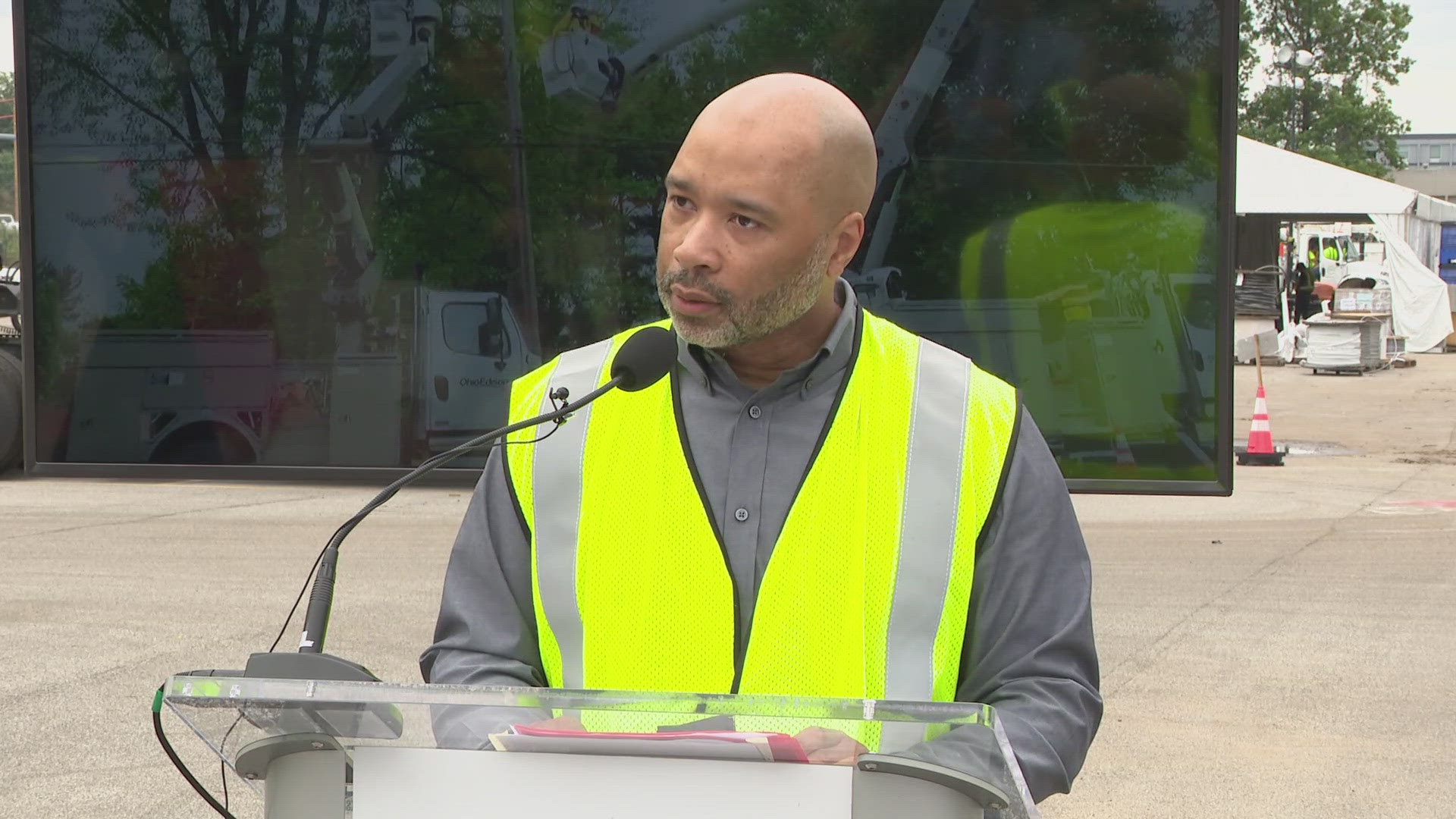EASTLAKE, Ohio — On Friday morning, FirstEnergy gave an update on its restoration efforts as thousands in Northeast Ohio remain without power following Tuesday's storms and tornadoes.
“Many of us can empathize with our customers who remain without power because we, too, live and work within these local communities that were impacted by these storms,“ said FirstEnergy Ohio's President Torrence Hinton during the press conference.
FirstEnergy says it has initiated mobile assistance and has 5,000 contractors who have come to help restore service, clear trees and keep the public safe.
The estimated restoration time is based on when they believe most customers will have their service restored. As of Friday, FirstEnergy estimated that 95% of residents will have power restored by Wednesday, Aug. 14, at 11:30 p.m.
In addition, he said that FirstEnergy employees are working around the clock to restore service to the nearly 200,000 without power.
“I really want to offer my sincere thanks to our customers who have shown incredible patience as we work through this process to restore their service. I understand it can be frustrating at times. I have heard countless stories of how they have shown support for our crews while they are working,” said Hinton.
The full press conference can be watched below:
FirstEnergy is also asking residents to stay away from downed lines and crews working in the field for safety reasons.
When asked why residents in Lakewood hadn't seen crews, he said that there is a process for where the crews work. The process starts with transmission lines, goes to substations and then to distribution lines.
FirstEnergy spokesperson Hannah Catlett later clarified that of the 27,000 customers the company serves in Lakewood, about 16,000 remained without power as of 1:30 p.m., "but that is going to decrease as we make progress even just [Friday] afternoon." Catlett said "multiple big jobs" were in the process of being completed.
In addition to determining where to restore power first, FirstEnergy speaks with public officials to understand critical areas where hospitals are and where elderly residents are.

